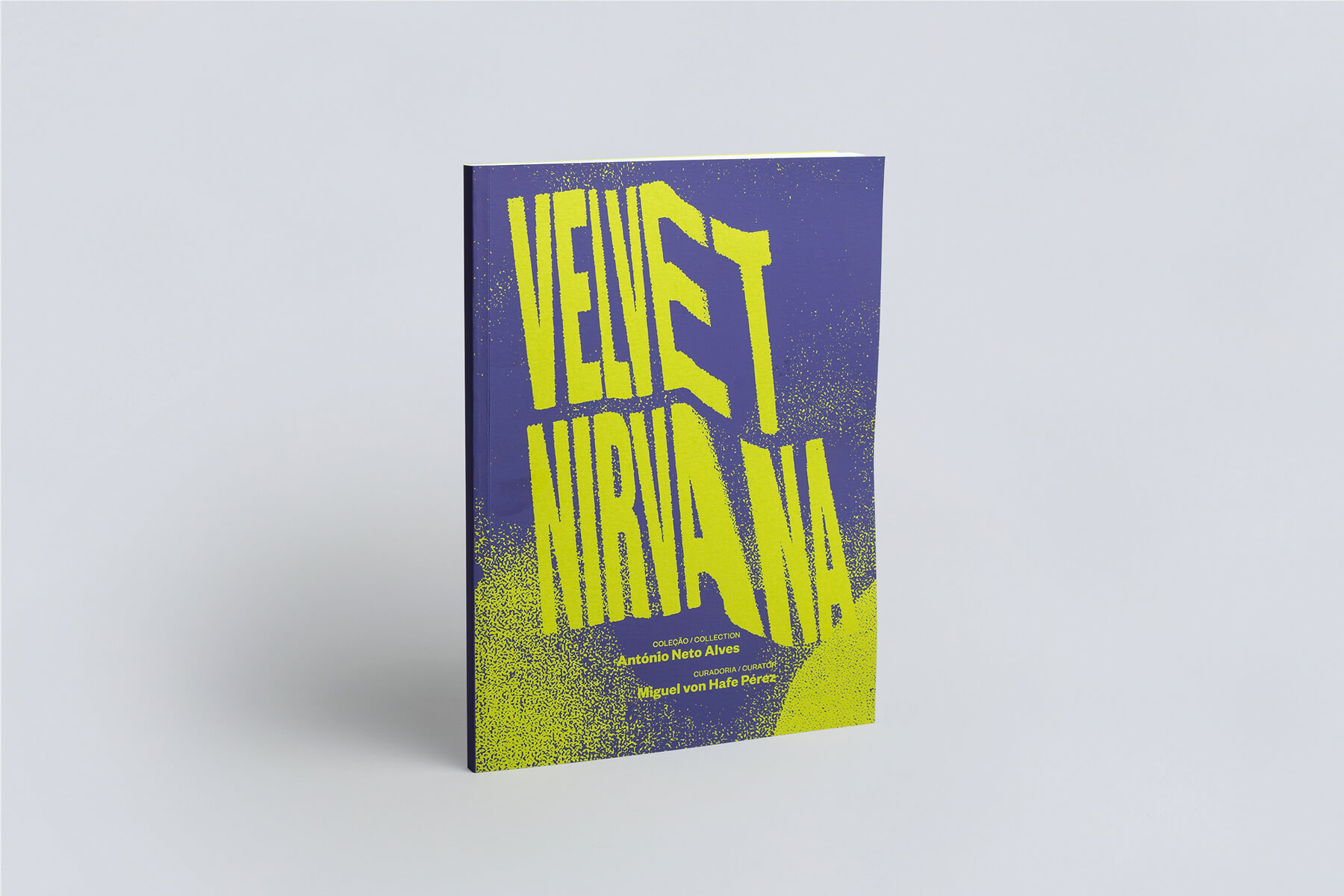This publication has been published on the occasion of the exhibition velvetnirvana that was on view at Pavilhão Branco between July 19 and September 27, 2020 and was curated by Miguel von Hafe Pérez. This volume features an introduction by Tobi Maier, alongside texts by António Neto Alves, Miguel von Hafe Pérez and José Carneiro, as well as photographs of the exhibited works. This publication has been edited in partnership with Stolen Books.
“The photographs, books, posters, fanzines, flyers, magazines and record covers presented at the gallery and reproduced in this publication reflect a profound enthusiasm as well as insatiable curiosity for research into the rich visual universe that forms a legacy of the Anglo-Saxon punk and post-punk music scene on both sides of the Atlantic. This interest culminated in a collection of visual ephemera that possibly remains unmatched on the Iberian Peninsula.”
– Tobi Maier
“My fascination with these themes began with a reissue of the album, The Velvet Underground & Nico, in the 1980s. The Velvet Underground was the first band to perfectly synthesise the convergence between rock, literature, cinema and the fine arts. It blended, among others, Andy Warhol, Delmore Schwartz, Stephen Shore, Jonas Mekas, Tony Conrad and Walter de Maria. The synthesis of these different artistic universes, under the guidance of Warhol but with the decisive participation of Lou Reed, inspired two multimedia publications that are essential for understanding US contemporary art at that time – Aspen Magazine (Vol. 1 No. 3, Phyllis Johnson, 1966) and Index Book (Random House, 1967). They are genuine multidisciplinary surprise boxes, with works from the North American avantgarde, including small lithographs, flip books and albums and served as the catalysts of the collection that underpins the velvetnirvana exhibition.”
– António Neto Alves
“We shouldn’t be misled by the conscious and prevailing DIY aesthetic embraced by many of the bands featured in this exhibition: the musical quality, the poetic pertinence and the structured protest against conservative social environments that attempted to silence disruptive creativity, marked the cultural landscape of this period. Indeed, the explosive encounter between Lou Reed and John Cale symbolically embodied two aspects of this complex world: a poetic dimension, inspired by street culture and its associated stories, and another more cerebral and erudite dimension.”
– Miguel von Hafe Pérez
“Many of these objects are displayed in the velvetnirvana exhibition and continue to be alive, because they are not only testimonies of the history of Punk and its subsequent developments. They are not memory exercises, but instead alert to the invention and inversion of a visual culture that tends to be devalued. […] However, this breadth of presented objects shows that Punk’s sound component was mixed with a graphic heritage that, from time to time (usually in moments of strong social and political tension), is recovered, revisited and tampered with, using an unstable manufacturing methodology, with raw and spontaneous production that is urgent and incisive in its discourse.”
– José Carneiro





